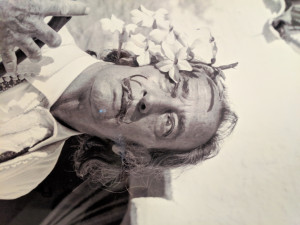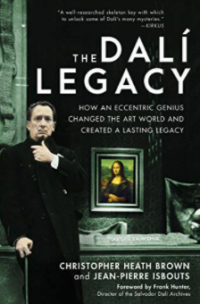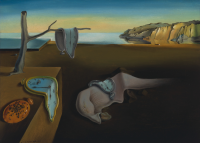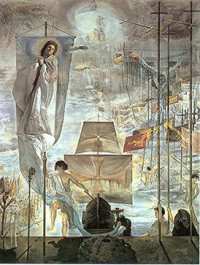





On Tuesday, March 23, 2021 at 11:30 a.m. Joseph Gallivan interviews art historians Dr. Christopher Heath Brown and Dr. Jean-Pierre Isbouts [PRONOUNCED IZZ-boots] talk about Catalan surrealist artist Salvador Dali and why he still has an impact on popular culture. They draw upon their new book, “THE DALÍ LEGACY: How an Eccentric Genius Changed the Art World and Created a Lasting Legacy” to place Dali in his social context and highlight his classical and 19th Century realist art lineage.
Art Focus airs live at 11.30 am on Tuesdays and is archived to the KBOO website that evening.
FROM THE PRESS RELEASE
Art historians Dr. Christopher Heath Brown and Dr. Jean-Pierre Isbouts reveal why artist Salvador Dalí still has an impact on popular culture in their new book, THE DALÍ LEGACY: How an Eccentric Genius Changed the Art World and Created a Lasting Legacy (published March 23, 2021).
Brown and Isbouts explore how Dalí was a pioneer in establishing himself as a brand which critics vilified him for, and they look at the transformative time in history in which Dalí lived—the Spanish Civil War, World War II, the rise of the Atomic Age, and the sexual revolution of the 1960's—all of which had an impact on his work.
See more at
https://kboo.fm/program/art-focus
https://www.facebook.com/kbooartfocus
FROM MOMA.org
The artist, author, critic, impresario, and provocateur Salvador Dalí burst onto the art scene in 1929 and rarely left the public eye until his death six decades later. The auspicious occasion was the debut in Paris of Un Chien Andalou, a film Dalí made in collaboration with Luis Buñuel. Filmed in Paris, Un Chien Andalou strung together free-associative vignettes and made full use of the avant-garde technique of montage, including, most famously, a scene of a razor slicing into a woman’s eye.
The film catapulted Dalí to the center of the Surrealist community. An artistic and intellectual movement begun by André Breton in 1924, Surrealism championed the unconscious as the primary motor of human behavior, coupling this with an aspiration to political revolution. Although Dalí’s association with Surrealism was late-coming and short-lived (he would be expelled from the group in 1934), his arrival jolted new life into the movement.
Dalí’s chief theoretical contribution to Surrealism was his elaboration, in the early 1930s, of the “paranoiac-critical method”—a process, he wrote, to “systematize confusion and thereby contribute to a total discrediting of the world of reality.” 1 The method described a deliberately disoriented state of mind that would allow an individual to connect unrelated things, forging fresh avenues of thought and creation. Around the same time, he also published several essays naming and defining the so-called “Surrealist object”: an object “functioning symbolically,” 2 usually constructed from found items or readymade materials, and redolent with psychological power. His Retrospective Bust of a Woman was one such object. Beneath its seemingly haphazardly embellished portrait bust of a woman pulsed a rich network of associations, from references to consumption (corn cobs and a baguette) to putrefaction (an ant swarm, a recurrent motif in Dalí’s work).
The Persistence of Memory, perhaps his most famous painting, was an overnight sensation on its first exhibition in New York, in January 1932. (It had remained unsold when first exhibited in Paris the previous summer.) The gallerist and early champion of the Surrealists Julien Levy proclaimed the painting “10 by 14 inches of Dalí dynamite,” and an image of it was reproduced in nearly every review. 3 Years later, Dalí would recount its genesis, claiming that the “soft watches” had their origin in the remains of a “very strong Camembert” cheese.
https://www.moma.org/artists/1364
GUEST CONTACT INFORMATION
Jean-Pierre Isbouts jisbouts@fielding.edu
Christopher Brown, docchbrown@aol.com
Book publicist Jacqui Daniels
+ + +
To hear previous episodes of this show or any of our KBOO public affairs programming, just go to KBOO.FM or listen on iTunes, Google Play, or wherever you get your podcasts.
Joseph Gallivan has been a reporter since 1990. He has covered music for the London Independent, Technology for the New York Post, and arts and culture for the Portland Tribune, where he is currently the Business Reporter. He is the author of two novels, "Oi, Ref!" and "England All Over" which are available on Amazon.com
This show was recorded on Zoom video conferencing software in Portland on March 12, 2021.
[END]
- KBOO


